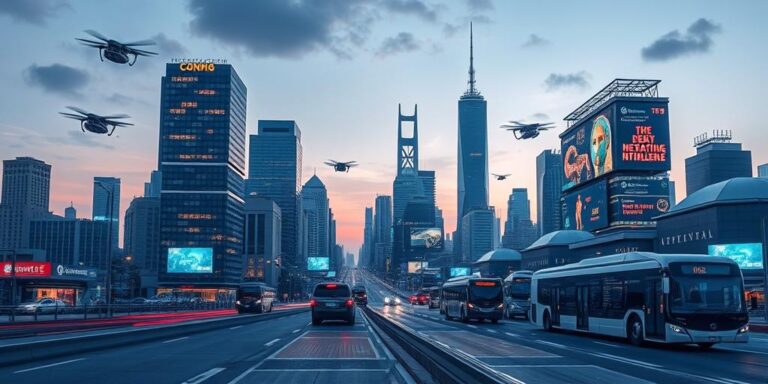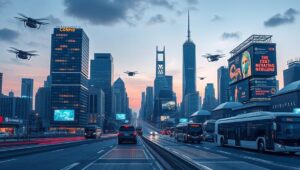The Rise of AI-Powered Smart Cities by 2030
Imagine stepping into a city where traffic flows seamlessly, energy consumption is optimized, and public safety is enhanced through intelligent systems. This isn’t a scene from a sci-fi movie, but a glimpse into the future of urban living powered by artificial intelligence (AI). By 2030, AI-driven technologies are poised to revolutionize how our cities operate, making them smarter, more sustainable, and more livable.
What is a Smart City?
A smart city leverages technology and data to improve the quality of life for its citizens. It integrates various systems – transportation, energy, communication, and public services – to create a connected urban environment. AI acts as the central nervous system, analyzing vast amounts of data to optimize resource allocation and decision-making.
Key Areas of AI Integration in Smart Cities
- Transportation: AI algorithms optimize traffic flow, reducing congestion and commute times. Self-driving vehicles, coordinated by AI, promise safer and more efficient transportation networks. Smart parking systems guide drivers to available spaces, minimizing time wasted searching.
- Energy Management: AI-powered smart grids analyze energy consumption patterns, optimizing distribution and reducing waste. Predictive maintenance algorithms identify potential equipment failures, preventing outages and improving grid reliability. Smart buildings adjust lighting, heating, and cooling based on occupancy and environmental conditions, minimizing energy usage.
- Public Safety: AI-powered surveillance systems analyze video feeds in real-time, detecting anomalies and alerting authorities to potential threats. Predictive policing algorithms identify high-risk areas, enabling proactive crime prevention strategies. AI-driven emergency response systems optimize dispatch routes and resource allocation, improving response times.
- Waste Management: Smart waste bins monitor fill levels, optimizing collection routes and reducing fuel consumption. AI-powered sorting systems improve recycling rates, diverting waste from landfills and promoting a circular economy.
- Infrastructure Management: AI algorithms analyze sensor data from bridges, roads, and other infrastructure, detecting potential structural issues before they become critical. This enables proactive maintenance, extending the lifespan of infrastructure and reducing repair costs.
Benefits of AI-Powered Smart Cities
- Improved Quality of Life: Reduced traffic congestion, enhanced public safety, and access to efficient public services improve the overall quality of life for city residents.
- Environmental Sustainability: Optimized energy consumption, reduced waste, and improved air quality contribute to a more sustainable urban environment.
- Economic Growth: Smart city initiatives attract businesses and talent, fostering economic growth and innovation.
- Enhanced Efficiency: Optimized resource allocation and streamlined processes improve the efficiency of city operations, reducing costs and improving service delivery.
Challenges and Considerations
- Data Privacy and Security: Smart cities generate vast amounts of data, raising concerns about privacy and security. Robust data protection measures and transparent data governance policies are essential.
- Bias and Fairness: AI algorithms can perpetuate existing biases if not carefully designed and monitored. Ensuring fairness and equity in AI systems is crucial.
- Job Displacement: The automation of certain tasks may lead to job displacement. Investing in workforce retraining and education programs is essential to mitigate this risk.
- Infrastructure Investment: Building and maintaining smart city infrastructure requires significant investment. Public-private partnerships and innovative financing models can help overcome this challenge.
The Future is Intelligent
The AI-powered smart cities of 2030 promise a future where technology enhances urban living, creating more sustainable, efficient, and livable environments. While challenges remain, the potential benefits are immense. By carefully addressing these challenges and embracing innovation, we can unlock the full potential of AI to create a brighter future for our cities.




